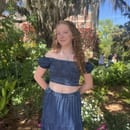Derry Girls begins as most great things do: with “Dreams” by The Cranberries.
The Netflix and Channel 4 show is a coming-of-age comedy set in 1990s Ireland. More specifically, Derry (or Londonderry, depending on your persuasion). One of the most significant aspects of the 1990s for Ireland was the fact that it brought about the end of the Troubles, a 30-year ethno-nationalist conflict in which Derry played a huge part. So, you’d think that because the Troubles were such an influential part of Derry’s history, they’d play a dominant role in the show, right? Wrong. The best way to describe the show’s approach to the conflict is to say that Derry Girls is set during the Troubles but isn’t about the Troubles.
A good example to describe what I mean can be found in the pilot episode’s description: “There’s a bomb scare on a nearby bridge, but Erin, Clare, Michelle, Orla, and James [our main characters] are facing something much more daunting: the first day of school.” In Derry Girls, the conflict is in the background. Rather than focusing on the politics and violence that surrounded the Troubles, the show displays them as just existing within its context, which, in my opinion, makes it more realistic. That’s not to say they don’t acknowledge the seriousness of what was happening. They don’t ignore the fact that people lost their lives in events like Bloody Sunday; but they also don’t shy away from depicting the feelings of a group of teenagers about the politics of it all, which are: largely uninterested.
One of the main themes of Derry Girls is that the seriousness of war can feel inconsequential when faced with teenage problems. This angle gave the show the ability to walk the line between being funny and serious about the issue, providing humor without burying the gravity of the situation. Instead of painting a bleak and solemn picture of mid-90s Derry, we see a show bursting with the loud, colorful, and somewhat sparkly trials of teenage girlhood. It’s a coming-of-age story about teen joy set against the harsh reality of war. Much like creator Lisa McGee (who based the show loosely on her teen years in Derry), the main characters are oblivious to the enormity of what is happening around them. This isn’t because they’re stupid or small-minded, they’re just concerned with more important things: crushes, exam results, and seeing Take That in concert.
The show does a good job of portraying what it’s like to grow up surrounded by violence and confrontation by having the characters not be as interested. Many people who live in areas surrounded by conflict aren’t revolutionists, they’re everyday citizens. Terrible things are happening around them, and yet their lives continue. They exist in a difficult time and try to enjoy their lives in spite of it. As the show progresses and the main characters mature from teenagers into adults, the Troubles become of more interest to them because they begin to realize the impact the conflict has on their country and their future. This shift can be best displayed with the help of four scenes from the show.
The first scene is the last scene of season one. The scene begins with Erin, Orla, Michelle, Clare, and James as they dance onstage at their school talent show, and changes to Erin’s living room, where her family watches in horror as a news broadcast describes a bomb detonation that had just occurred (based on the 1998 Omagh Bombing). As the scene changes back and forth, the grief and shock felt by the adults is a striking contrast to the delight seen on the faces of the teens as they dance and twirl around. At this point in the show, they’re 16, and completely separated from the atrocities being committed.
The second scene that displays this shift is one of the first scenes in the last episode of the series. The scene takes place a week before Erin and Orla turn 18 and depicts a dance routine to “Sunchyme” by Dario G, led by Orla after picking up her voter registration. This scene perfectly represents the beginning of their shift into adulthood, as Orla’s dance is abruptly stopped when she reaches a military checkpoint and must speak to a British soldier to continue her route home.
The last two scenes depicting the change from teenagers to adults happen at the end of the last episode. In the first of the two scenes, Erin is talking to her grandfather about voting on the upcoming Good Friday Agreement Referendum. She expresses fear over making the wrong decision and says, “What if we do it, and it was all for nothing? What if we vote yes, and it doesn’t even work?” To which he replies, “And what if it does?” In the next scene, the referendum happens, and as “Dreams” plays for the last time in the series, we see almost every character in the show cast their votes. We see our five main characters think about what they’ve seen, learned, and become, taking part in making an effort toward peace, while also taking their final steps into adulthood.
About adulthood, Erin says, “There’s a part of me that doesn’t really want to grow up. I’m not sure I’m ready for it, I’m not sure I’m ready for the world … but things can’t stay the same, and they shouldn’t … no matter how scary it is we have to move on and we have to grow up because things, well they might just change for the better.”
Want to see more HCFSU? Be sure to like us onFacebook and follow us on Instagram, Twitter, TikTok, YouTube and Pinterest!


